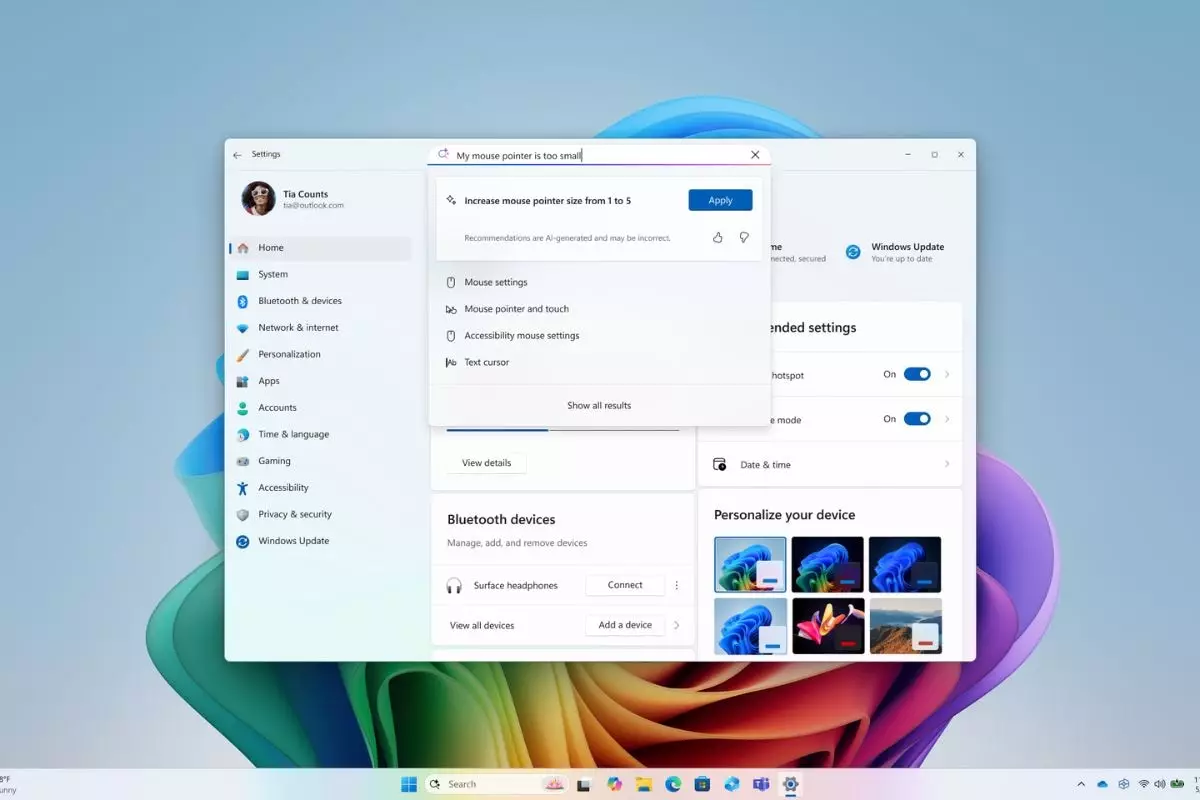In an era where technological advancements teeter on the brink of intelligence, Microsoft’s unveiling of the Mu AI model heralds a radical shift in how we interact with our devices. This innovative small language model (SLM) focuses on delivering smart assistance locally, meaning it doesn’t rely on cloud processing—an important factor for both performance and privacy. As users grapple with increasing demands for efficiency in their digital lives, Microsoft’s Mu might just be the game-changer we didn’t know we needed.
Imagine a world where simply describing a task—like adjusting system settings—could be executed seamlessly by your device. That’s precisely what Microsoft is betting on with its latest Windows 11 update. By embedding Mu into the Settings menu, Microsoft empowers users to articulate their instructions in natural language. Unlike traditional interfaces, which often force users to navigate through labyrinthine menus, Mu offers an engaging alternative that is fast, intuitive, and, critically, responsive.
Technical Ingenuity at Work
Delving deeper into Mu’s infrastructure, its transformer-based encoder-decoder design is a testament to Microsoft’s commitment to utility without sacrificing performance. Comprising 330 million token parameters, Mu is tailor-made for on-device work, catering to a demographic increasingly concerned about privacy and data security. This local processing capability not only enhances user experience by reducing latency but also ensures that sensitive data isn’t whisked away to the cloud for processing.
Moreover, Microsoft’s deep investment in training and optimizing Mu has paid dividends. The assertions that this stripped-down model performs comparably to larger, more complex models while consuming significantly fewer computational resources are compelling. This innovation reflects not just technical prowess but also a strategic pivot in AI deployment: the focus is on practical applications in consumer technology rather than mere theoretical advancements.
User-Centric Design
The practical implementation of Mu raises important questions about how we engage with technology. Microsoft recognized early on that successful interaction hinges on context and detail in user queries. While deeper, multi-word phrases yield a more accurate response—think “lower screen brightness at night” instead of simply “brightness”—the push for intelligent handling of inputs isn’t flawless. Underlying assumptions about user behavior can lead to gaps where additional modality or information is required. By continuing to surface traditional keyword-based results when ambiguity arises, Microsoft displays a keen awareness of the delicate balance between AI aspirations and real-world usage patterns.
It’s intriguing to note the lengths Microsoft has gone to scale its training dataset significantly. By expanding from a mere 50 settings to hundreds, the intent to craft a robust, contextually aware model is clear. Techniques such as synthetic labeling and noise injection are not mere jargon; they are critical elements that facilitate a nuanced understanding of everyday language use. However, the effectiveness of such strategies begs scrutiny—are we merely promoting a more sophisticated search, or is Mu genuinely enhancing our engagement with technology in a way that aligns with the complexities of human interaction?
The Linguistic Challenge
A standout issue is Mu’s proficiency with linguistic subtleties and variances. If a user commands “increase brightness,” does the AI comprehend whether the user is referring to the laptop screen or an external monitor? This uncertainty could lead to frustration in what we assume should be straightforward commands. Microsoft’s response, focusing on the most commonly used settings, highlights a critical intersection between machine learning and real-world applicability. But will this approach alienate users with less common but equally valid requests?
Despite these limitations, the design choices display a profound understanding of user behavior in a fluid digital landscape. The model’s refinement, incorporating user feedback and ongoing adjustments, illuminates a commitment to continuous improvement—a core principle that should underpin AI development tailored for consumer use.
The Bigger Picture
Ultimately, Microsoft’s Mu serves as both a promise and a challenge. While it undoubtedly streamlines user experience and pushes the envelope on localized AI applications, it also reflects the complexities in creating an understanding and responsive digital assistant. As we move forward, the expectations for such technologies will only grow, and the question remains: can Microsoft not only meet but exceed these demands, or will it be eclipsed by the next wave of innovation elsewhere? The landscape is dynamic, and Microsoft’s Mu has made an intriguing entry, but the road ahead promises to be both thrilling and fraught with complexity.

